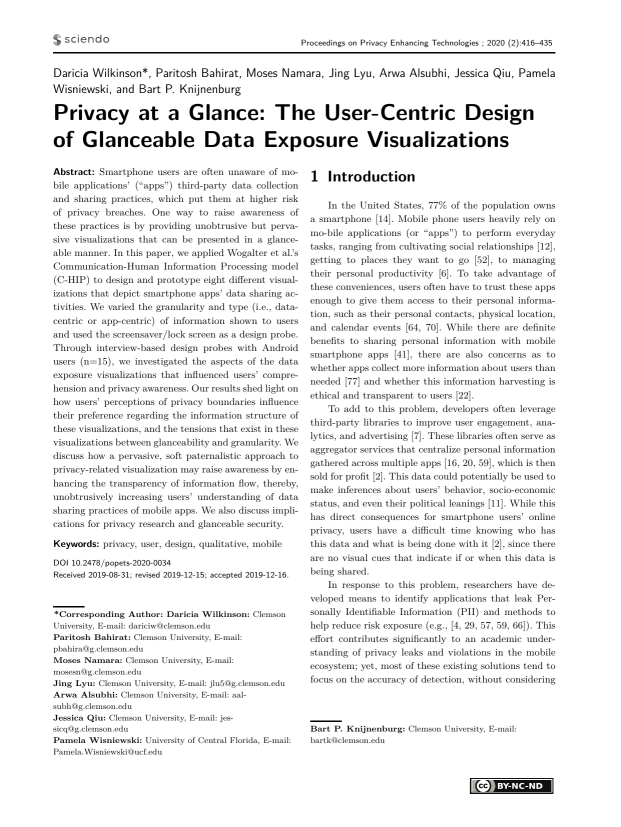Privacy at a Glance: The User-Centric Design of Glanceable Data Exposure Visualizations
Authors: Daricia Wilkinson (Clemson University), Paritosh Bahirat (Clemson University), Moses Namara (Clemson University), Jing Lyu (Clemson University), Arwa Alsubhi (Clemson University), Jessica Qiu (Clemson University), Pamela Wisniewski (University of Central Florida), Bart P. Knijnenburg (Clemson University)
Volume: 2020
Issue: 2
Pages: 416–435
DOI: https://doi.org/10.2478/popets-2020-0034
Abstract: Smartphone users are often unaware of mobile applications’ (“apps”) third-party data collection and sharing practices, which put them at higher risk of privacy breaches. One way to raise awareness of these practices is by providing unobtrusive but pervasive visualizations that can be presented in a glanceable manner. In this paper, we applied Wogalter et al.’s Communication-Human Information Processing model (C-HIP) to design and prototype eight different visualizations that depict smartphone apps’ data sharing activities. We varied the granularity and type (i.e., datacentric or app-centric) of information shown to users and used the screensaver/lock screen as a design probe. Through interview-based design probes with Android users (n=15), we investigated the aspects of the data exposure visualizations that influenced users’ comprehension and privacy awareness. Our results shed light on how users’ perceptions of privacy boundaries influence their preference regarding the information structure of these visualizations, and the tensions that exist in these visualizations between glanceability and granularity. We discuss how a pervasive, soft paternalistic approach to privacy-related visualization may raise awareness by enhancing the transparency of information flow, thereby, unobtrusively increasing users’ understanding of data sharing practices of mobile apps. We also discuss implications for privacy research and glanceable security.
Keywords: privacy, user, design, qualitative, mobile
Copyright in PoPETs articles are held by their authors. This article is published under a Creative Commons Attribution-NonCommercial-NoDerivs 3.0 license.

